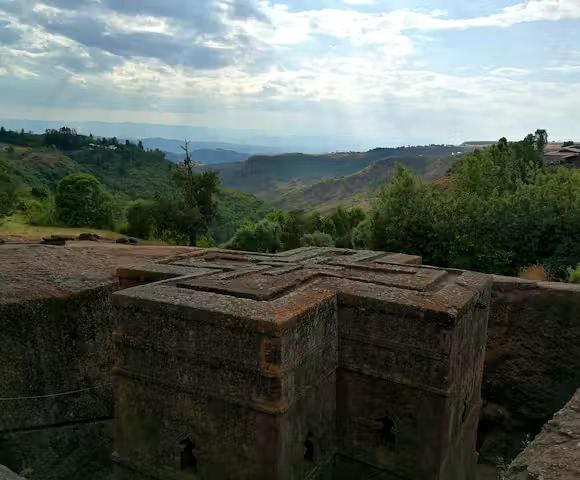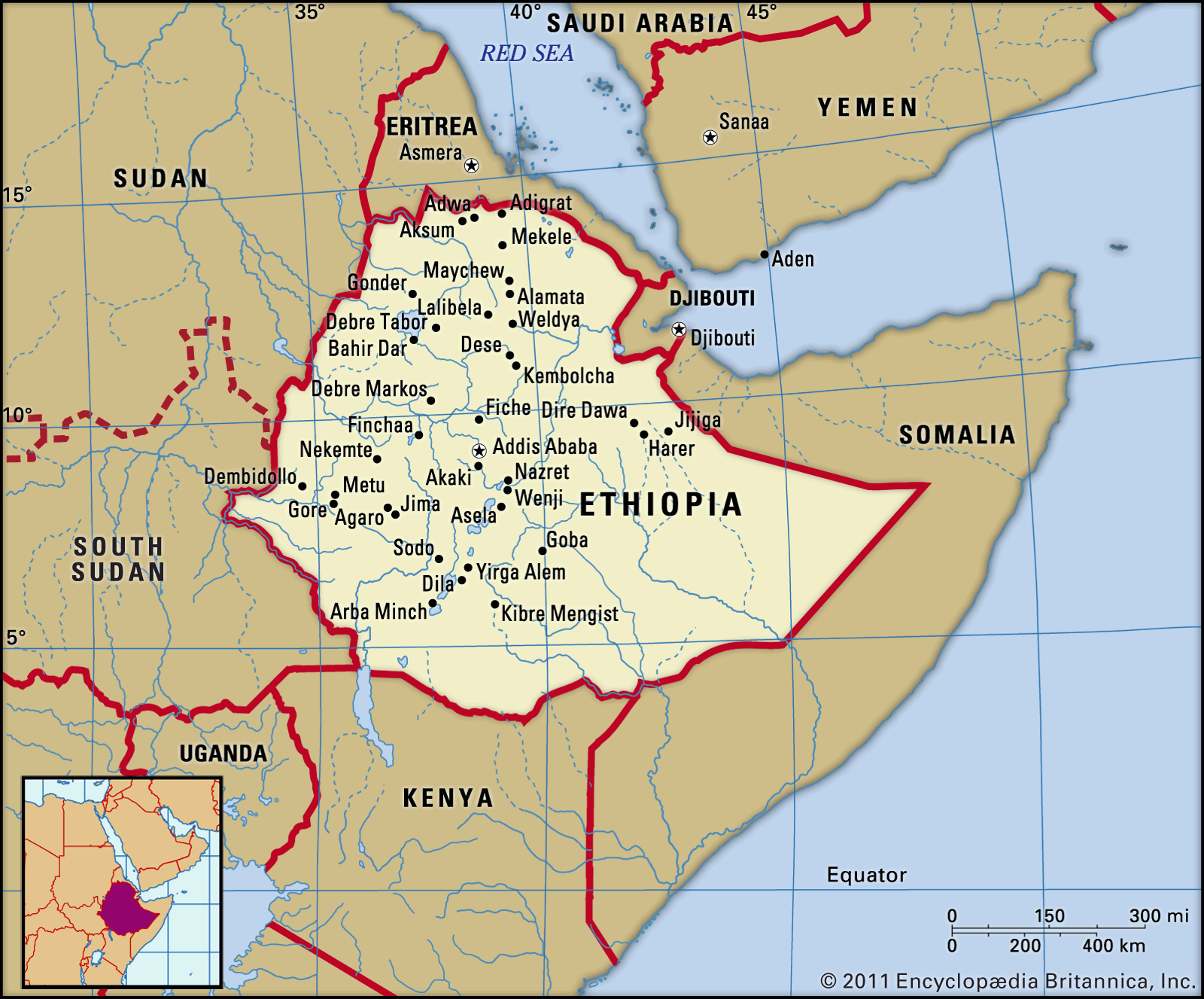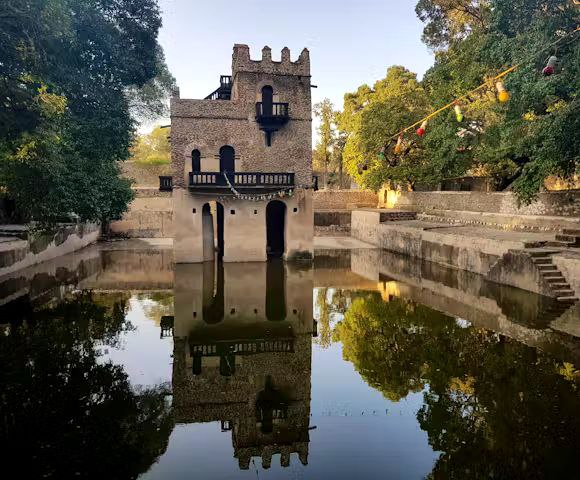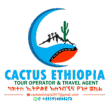Federal Democratic Republic of Ethiopia
TRAVEL TIPS
Ethiopia (formerly called Abyssinia) is the oldest independent and proud nation in Africa and one of the oldest Christian nations in the world.

Ethiopia covers an area of 1.14 million square kilometers (944,000 square miles) Climate. There are two major seasons: the dry season prevails from October through May; the wet season runs from June to September.
Ethiopian climatic zone
Traditionally Ethiopia has five climatic zones.
Bereha
Hot and Arid desert lowland lie below 500m and receives less than 500mm of precipitation annually. Inhibited by pastoralists. Somali border area and rift valley north of Addis Ababa.
Kolla
Warm to Tot, mid-altitude location receives sufficient rainfall. The rift valley b/n Addis Ababa and Awassa
Weynadega
Warm to cool medium to high altitude receiving more than 1500mm annual rainfall. Excellent for cultivation of grains (teff) and coffee most highlands below 2600 contour e.g. Addis Ababa, asela, jimma, goba other most high lands below 2600m contour.
Dega
Cool to Cold, medium to high rainfall, with an altitude range b/n 2600m-3200m support grass land or coniferous forest. Cultivate grains such as barley and wheat. Dinsho, debrebrehan, mehalmeda, ankober other high lands range b/n 2600-3200m.
Worch
Chilly, medium to low rainfall, with the vegetation of afro-alphine. Generally conductive to cultivation. Sanetti plateau (bale national park), the eastern peaks of simiens, gussa plateau, or peaks above 3200-3500m.

Meba Ethiopia Tours is the best tour company in Lalibela, Ethiopia.
Ethiopian Topography
Ethiopia has an elevated central plateau varying in height between 2,000 and 3,000 meters. In the north and centre of the country there are some 25 mountains whose peaks rise over 4,000 meters. The most famous Ethiopian river is the Blue Nile (or Abay), which runs a distance of 1,450 kilometers from the source in Lake Tana, to join the White Nile at Khartoum.

Ethiopian Economy
About 85 per cent of the population earns living from the land, mainly as subsistence farmers
Agriculture is the backbone of the national economy.
- coffee
- Oil seeds
- Pulses
- Flowers
Ethiopian Language
Ethiopia is a multi-ethnic state with a great variety of languages spoken in the country, of which there are 83 with 200 dialects.
Amharic working language of the Federal Democratic Republic of Ethiopia
- Amharic
- Oromigna
- Tigrigna
- English, Italian, French and Arabic are widely spoken
Basic Important information in Ethiopia.
Religion
Major religions in the country are Christianity and Islam.
Main Exports
Coffee, hides, oil seeds, beeswax, meat, sugarcane, and flowers.
Electric supply
Ethiopia uses 220 volts 50 cycles AC.
Internet
Internet domain or country code suffix .et Numerous internet cafes are available in Addis Ababa and in other cities.
Excursions
Excursions within Ethiopia, whether for a day or for a month, may be organized for you by any of the travel agencies or by the National Tour Operation.
Telephone
International dialing code: (+251)
Time
Ethiopia is in the GMT + 3 hours time zone. Ethiopia follows the Julian calendar
People
The population is estimated at 120 million
Additional Information
To give some information about the local currency , clossing style with the local weather, and alsp other services.
Currency:
The local currency is the Ethiopian Birr (ETB), made up of 100 cents. Birr notes are available in denominations of 5, 10, 50, 100 and 200. Visitors may import an unlimited amount of foreign currency, but this must be declared on arrival to the customs authorities on the appropriate, blue-colored form. Foreign currency may only be exchanged at authorized banks and hotels, and a receipt must be obtained. The currency declaration form must be retained as this will be required by customs on departure. Visitors may change back any surplus Ethiopian Birr to cash at the airport before departure. In addition to any Ethiopian Birr, along with the currency exchange form you must bring with you all receipts for exchange transactions.
Clothing
In general between seasons clothes are appropriate. At higher altitudes, woolen clothes or a coat are needed in the evenings. Travelers should take rain coat or other rainwear, particularly when visiting the country during the period from February to October. It is usually possible to have clothes laundered at or near hotels within a short period of time (frequently services are offered 24 hours a day).
Communications
Telephone, fax and Internet access is available in Addis Ababa in most hotels, at the Ethiopian Telecommunications Authority main office and at private Internet service centers situated around the city. Courier and Money Transfer Services Money transfers can be made through Western Union and Money Gram. Both have representative branches in Addis Ababa and also make their services available from private and national banks. Four courier service providers DHL, FedEx, UPS, TNT and EMS have offices in Addis Ababa.
Hotels
Addis Ababa has hotels that cater for all pockets, from the luxurious Sheraton and Hilton hotels to the tourist-class hotels such as the Ghion, the Ethiopia and the Wabi Shebelle. All tourist resorts offer a choice of modern hotels.
Banking Hours
Banking hours are usually from 8:00 am – 4:00 pm from Monday to Friday and from 8:00 am – 11:00 am on Saturdays. Closing times may be an hour longer in some private banks. Most banks work through lunchtime; however foreign exchange services are closed during lunch hours (12:00 noon – 1:00 pm)./p>
Currency Importing and Exporting
Local currency (ETB) up to ETB 10.00 per person. Foreign currencies unlimited, provided declaration is made to the customs on arrival. and provided passengers holds a re-entry permit ETB 10.00 per person. Foreign currencies up to the amounts imported and declared.
Months Holidays
Ethiopian New Year
The finding of the True Cross (Meskal)
Id ul Fitr (Ramadhan)
Id ul Ahda (Sacrifice)
Ethiopian Christmas
Ethiopian Epiphany
Victory of Adwa
Birth of Prophet Mohammed (Mauwlid)
Ethiopian Good Friday ( date’s will be vary each year )
Ethiopian Easter Ethiopian Festivals (date’s will be vary each year)
International Labour day.
Ethiopian patriots’ victory day
Downfall of the Dergue Regime
Public Holidays in Ethiopia
Sunday is the weekly day of rest. Public holidays are celebrated according to the Ethiopian (Julian) Calendar which consists of twelve months of thirty days each and a thirteenth month of five days (six days in leap year). The calendar is seven years behind the Western or Gregorian Calendar, with New Year falling in the month of September.

Lalibela Ethiopia, Addis Ababa Ethiopia
Why Choose Us
Best Hospitality
Refers to exceptional service and experiences in the hospitality industry
Save Travel
Promoting responsible and sustainable travel practices.
Historical Tour
Journey that focuses on exploring and learning about significant historical sites, landmarks, or events.
